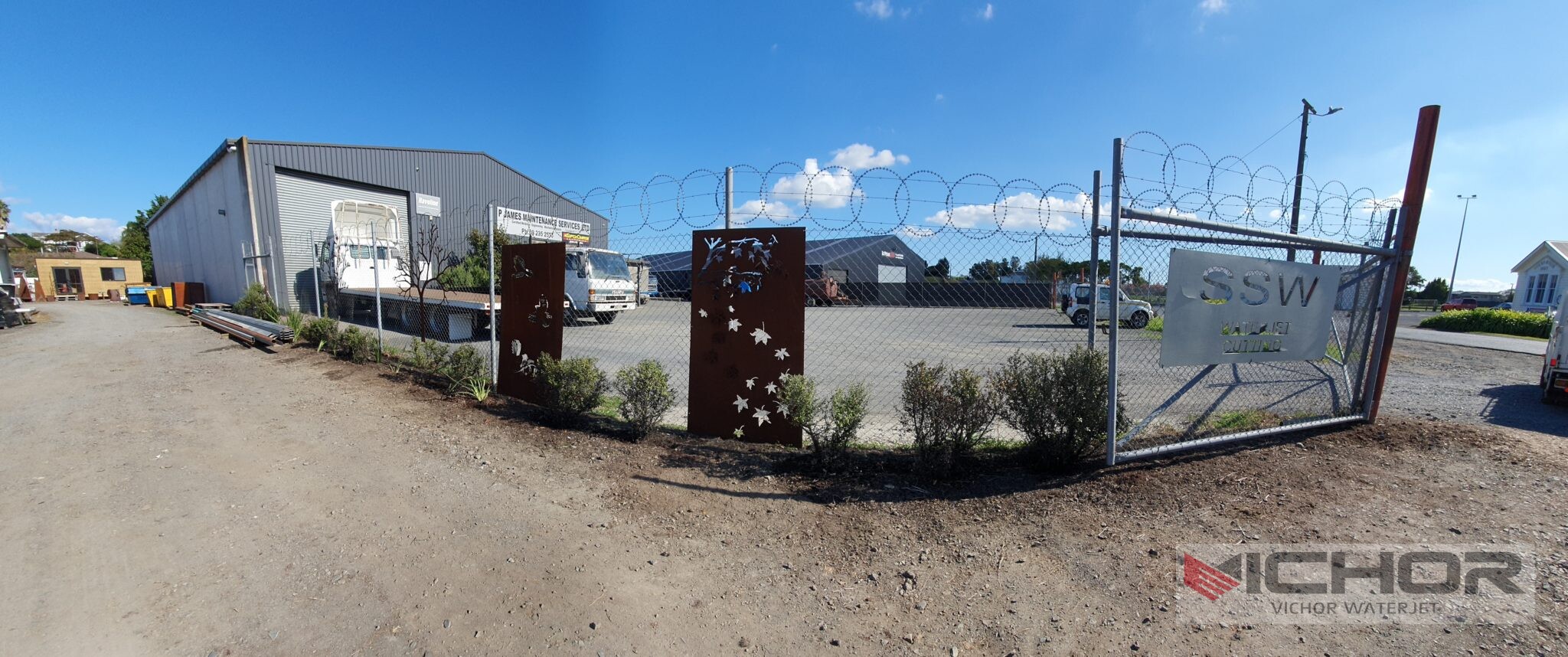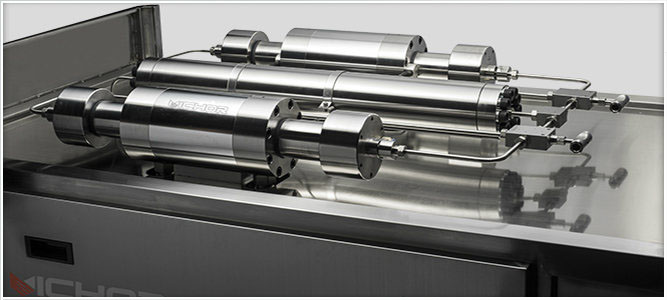
The Ultimate Guide to Waterjet Intensifier Pump: How It Works, Benefits, and Common Issues
In the world of precision cutting and industrial manufacturing, the waterjet cutter has become an indispensable tool, capable of slicing through everything from titanium to tofu with breathtaking accuracy. But at the heart of every high-pressure waterjet system lies its powerhouse: the waterjet intensifier pump. This critical component is responsible for transforming ordinary tap water into a supersonic stream capable of immense precision and power. Understanding the waterjet intensifier pump is crucial for anyone involved in purchasing, operating, or maintaining these systems. This comprehensive guide will delve deep into how this pump works, its key advantages, and the common problems you might encounter, providing you with the knowledge to ensure optimal performance and longevity.
What is a Waterjet Intensifier Pump and How Does It Work?
A waterjet intensifier pump is a type of positive displacement pump that uses hydraulic power to amplify water pressure to extremely high levels. Unlike centrifugal pumps that cannot achieve such pressures, intensifier pumps are uniquely designed for this singular purpose. The core principle behind a waterjet intensifier pump is Pascal’s Law, which states that pressure applied to a confined fluid is transmitted undiminished in every direction.
The operation of a waterjet intensifier pump is a cyclic process:
Low-Pressure Oil Inlet: A hydraulic pump pushes low-pressure oil (typically around 3,000 psi) into one side of a large hydraulic piston.
Pressure Intensification: This large piston is connected to a much smaller plunger on the water side. The ratio of the piston’s area to the plunger’s area determines the intensification ratio. For example, a 20:1 ratio would multiply the inlet oil pressure by 20.
High-Pressure Water Output: As the hydraulic piston is driven by the oil, it forces the smaller plunger to push water into a special high-pressure cylinder. This action pressurizes the water to the desired extreme level, often reaching 60,000 psi (4,100 bar) or even 90,000 psi (6,200 bar) in some models.
Reversing Valve: Once the piston reaches the end of its stroke, a switching valve automatically reverses the flow of hydraulic oil to the other side of the piston.
Reciprocation: The piston changes direction, and the plunger on the opposite side begins its pressurization stroke. This back-and-forth (reciprocating) motion ensures a near-continuous flow of ultra-high-pressure water to the cutting head.
This ingenious design allows a waterjet intensifier pump to generate the consistent, incredibly high pressure required for abrasive waterjet cutting.
Key Components of a Waterjet Intensifier Pump
To fully appreciate its operation, one must understand its main components:
Hydraulic Pump: Provides the low-pressure hydraulic oil that drives the entire system.
Hydraulic Piston: A large piston that is actuated by the hydraulic oil.
Intensifier Plungers: Two smaller plungers (one on each side) attached to the hydraulic piston. They are the components that directly pressurize the water.
Check Valves: These one-way valves ensure water flows in only one direction—into the high-pressure chamber and then out to the cutting head—preventing backflow.
High-Pressure Cylinder (Water Column): The vessel where water is stored at ultra-high pressure before being sent to the cutting head.
Switching/Reversing Valve: The brain of the operation, this valve detects the end of a stroke and triggers the reversal of hydraulic flow to alternate the pistons.
Unloader Valve: A crucial safety and operational valve that relieves system pressure when the cutting head is not active, such as when the machine is off or paused.
Advantages of Using an Intensifier Pump in Waterjet Cutting
Why is the waterjet intensifier pump the dominant technology in high-pressure waterjet cutting? Its advantages are significant:
Extremely High Pressure Generation: The primary advantage is its ability to consistently generate the ultra-high pressures necessary for cutting hard materials, especially when using abrasive additives.
Constant Pressure Delivery: Despite its reciprocating nature, the use of two plungers and an accumulator results in a very stable pressure output, which is critical for achieving smooth, precise cuts without striations or “lag lines.”
Robust and Durable Design: Intensifier pumps are built to withstand the immense stresses of ultra-high pressure. With proper maintenance, they offer a long service life and excellent reliability.
Efficiency at High Pressure: They are highly efficient at converting hydraulic power into water pressure, making them ideal for continuous, heavy-duty industrial applications.
Scalability: The technology can be scaled to different power levels (e.g., 50 HP, 100 HP) to meet various production demands, from small job shops to large manufacturing facilities.
Common Applications of Waterjet Intensifier Pumps
The power generated by a waterjet intensifier pump is harnessed across a diverse range of industries:
Metal Fabrication: Cutting complex shapes in steel, aluminum, brass, and titanium for aerospace, automotive, and architectural components.
Stone and Tile Processing: Precisely cutting natural stone, granite, and marble for countertops, floors, and decorative pieces with no thermal damage.
Glass and Composite Cutting: Creating intricate shapes in glass for mirrors and windows, and cutting layered composite materials without delamination.
Food Industry: Cutting frozen foods, baked goods, and other food products hygienically and with minimal waste.
Electronics and Semiconductors: Precisely cutting circuit boards and other sensitive electronic components.
Manufacturing Gaskets and Seals: Cutting rubber, foam, and plastics into precise seals and gaskets for various machinery.
Common Problems and Troubleshooting for Waterjet Intensifier Pumps
Even the most robust systems can encounter issues. Here are the most common problems associated with a waterjet intensifier pump and how to address them.
1. Low Pressure or Pressure Fluctuations
Symptoms: Inability to reach set pressure, pressure drops during cutting, poor cut quality.
Possible Causes:
Worn Pump Seals or Check Valves: This is the most common cause of pressure loss. Seals and valves wear out over time and need replacement as part of regular maintenance.
Clogged Inlet Water Filter: A dirty filter starves the pump of water, causing cavitation and pressure drops.
Air in the High-Pressure System: Air is compressible and will prevent the system from building proper pressure.
Faulty Unloader Valve: A valve that is not sealing correctly will leak pressure.
Worn Intensifier Plungers: Scratched or worn plungers can damage seals and prevent proper pressurization.
2. Hydraulic Oil Issues
Symptoms: Pump overheating, slow cycling, noisy operation.
Possible Causes:
Low Oil Level: The most basic check. Always ensure the hydraulic reservoir is filled to the correct level.
Contaminated Oil: Water, air, or particulate matter in the hydraulic oil can cause major damage to the hydraulic pump and valves. Oil should be changed regularly per the manufacturer’s schedule.
Old or Degraded Oil: Hydraulic oil loses its viscosity and lubricating properties over time and must be replaced.
3. Water Ingress in the Hydraulic Oil
Symptoms: Milky, cloudy-looking hydraulic oil.
Possible Causes:
Failed Seal on the Intensifier Piston: The primary seal that separates the water section from the hydraulic oil section has failed. This is a serious issue that requires immediate attention to prevent extensive damage to the entire hydraulic system.
4. Excessive Vibration or Noise
Symptoms: Knocking, banging, or unusual vibrations coming from the pump.
Possible Causes:
“Water Hammer” or Shock Pressure Spikes: Often caused by a malfunctioning unloader valve that is not relieving pressure smoothly between cycles.
Worn Bearings or Misalignment: In the hydraulic pump or intensifier assembly.
Cavitation: Often sounds like gravel in the pump. Caused by a restriction on the inlet water side (dirty filter) or insufficient water supply.
5. Leaking Water or Hydraulic Oil
Symptoms: Visible leaks around the pump assembly.
Possible Causes:
Failed Seals or O-rings: The high-pressure environment is relentless on seals. External leaks indicate a seal needs replacement.
Loose Fittings: High-pressure connections can work themselves loose over time and require retightening to the specified torque.
Preventive Maintenance Tips for Your Waterjet Intensifier Pump
The best way to avoid costly downtime and repairs is a rigorous preventive maintenance schedule:
Follow the Manufacturer’s Schedule: Adhere strictly to the recommended service intervals for changing oil, filters, and seals.
Daily Checks: Monitor hydraulic oil levels, check for visible leaks, and listen for unusual sounds.
Water Quality: Use filtered, softened water. Poor water quality is a leading cause of internal wear and clogging.
Regularly Change Filters: Replace inlet water filters, hydraulic oil filters, and intensifier seal kit filters as required.
Keep Records: Maintain a log of all maintenance activities, pressure readings, and any issues encountered. This helps in diagnosing future problems.
The waterjet intensifier pump is a masterpiece of engineering that makes the incredible power of waterjet cutting possible. Its ability to reliably generate and manage ultra-high-pressure water is the foundation upon which the versatility and precision of waterjet technology are built. By understanding its operation, recognizing its advantages, and being vigilant about its common failure points, operators and business owners can maximize their investment. A well-maintained waterjet intensifier pump is the key to achieving years of productive, high-quality, and profitable cutting operation. Remember, proactive care is far less expensive than reactive repairs in the world of ultra-high pressure.
continue reading
Related Posts
- 2124 words10.7 min read
- 2107 words10.6 min read




